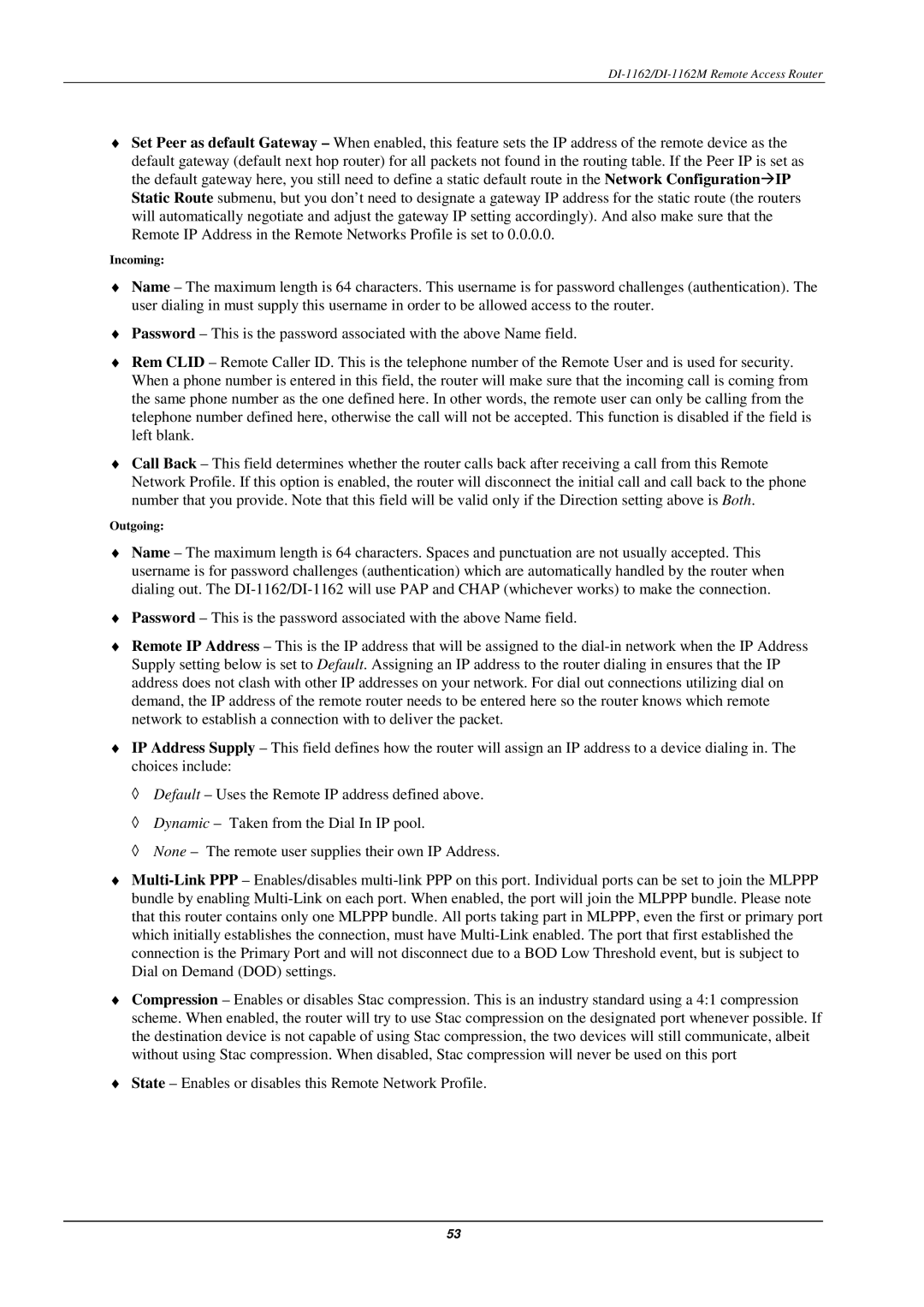
DI-1162/DI-1162M Remote Access Router
♦Set Peer as default Gateway – When enabled, this feature sets the IP address of the remote device as the default gateway (default next hop router) for all packets not found in the routing table. If the Peer IP is set as the default gateway here, you still need to define a static default route in the Network Configuration!IP Static Route submenu, but you don’t need to designate a gateway IP address for the static route (the routers will automatically negotiate and adjust the gateway IP setting accordingly). And also make sure that the Remote IP Address in the Remote Networks Profile is set to 0.0.0.0.
Incoming:
♦Name – The maximum length is 64 characters. This username is for password challenges (authentication). The user dialing in must supply this username in order to be allowed access to the router.
♦Password – This is the password associated with the above Name field.
♦Rem CLID – Remote Caller ID. This is the telephone number of the Remote User and is used for security. When a phone number is entered in this field, the router will make sure that the incoming call is coming from the same phone number as the one defined here. In other words, the remote user can only be calling from the telephone number defined here, otherwise the call will not be accepted. This function is disabled if the field is left blank.
♦Call Back – This field determines whether the router calls back after receiving a call from this Remote Network Profile. If this option is enabled, the router will disconnect the initial call and call back to the phone number that you provide. Note that this field will be valid only if the Direction setting above is Both.
Outgoing:
♦Name – The maximum length is 64 characters. Spaces and punctuation are not usually accepted. This username is for password challenges (authentication) which are automatically handled by the router when dialing out. The
♦Password – This is the password associated with the above Name field.
♦Remote IP Address – This is the IP address that will be assigned to the
♦IP Address Supply – This field defines how the router will assign an IP address to a device dialing in. The choices include:
◊Default – Uses the Remote IP address defined above.
◊Dynamic – Taken from the Dial In IP pool.
◊None – The remote user supplies their own IP Address.
♦
♦Compression – Enables or disables Stac compression. This is an industry standard using a 4:1 compression scheme. When enabled, the router will try to use Stac compression on the designated port whenever possible. If the destination device is not capable of using Stac compression, the two devices will still communicate, albeit without using Stac compression. When disabled, Stac compression will never be used on this port
♦State – Enables or disables this Remote Network Profile.
53
